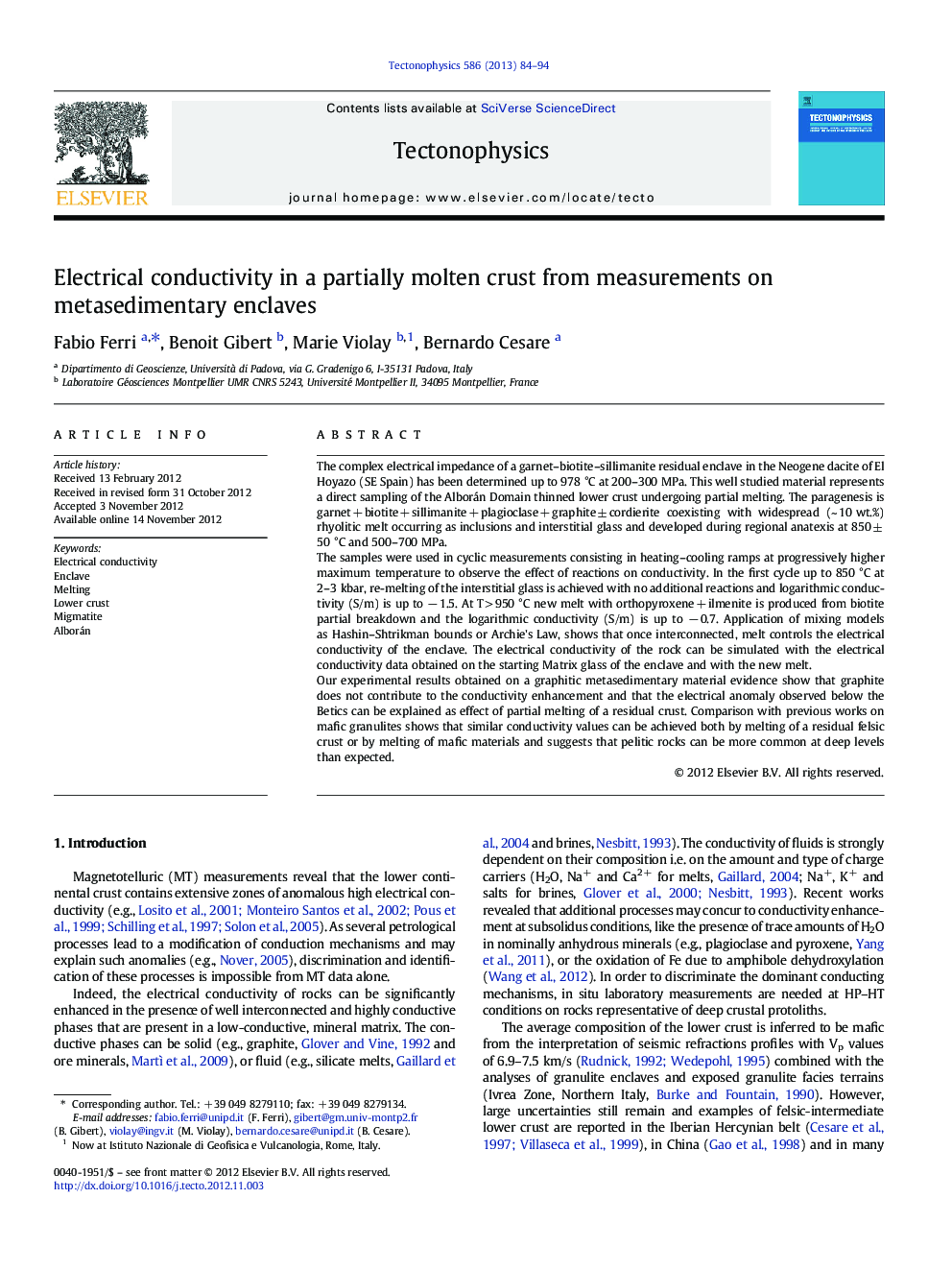| Article ID | Journal | Published Year | Pages | File Type |
|---|---|---|---|---|
| 4692465 | Tectonophysics | 2013 | 11 Pages |
The complex electrical impedance of a garnet–biotite–sillimanite residual enclave in the Neogene dacite of El Hoyazo (SE Spain) has been determined up to 978 °C at 200–300 MPa. This well studied material represents a direct sampling of the Alborán Domain thinned lower crust undergoing partial melting. The paragenesis is garnet + biotite + sillimanite + plagioclase + graphite ± cordierite coexisting with widespread (~ 10 wt.%) rhyolitic melt occurring as inclusions and interstitial glass and developed during regional anatexis at 850 ± 50 °C and 500–700 MPa.The samples were used in cyclic measurements consisting in heating–cooling ramps at progressively higher maximum temperature to observe the effect of reactions on conductivity. In the first cycle up to 850 °C at 2–3 kbar, re-melting of the interstitial glass is achieved with no additional reactions and logarithmic conductivity (S/m) is up to − 1.5. At T > 950 °C new melt with orthopyroxene + ilmenite is produced from biotite partial breakdown and the logarithmic conductivity (S/m) is up to − 0.7. Application of mixing models as Hashin–Shtrikman bounds or Archie's Law, shows that once interconnected, melt controls the electrical conductivity of the enclave. The electrical conductivity of the rock can be simulated with the electrical conductivity data obtained on the starting Matrix glass of the enclave and with the new melt.Our experimental results obtained on a graphitic metasedimentary material evidence show that graphite does not contribute to the conductivity enhancement and that the electrical anomaly observed below the Betics can be explained as effect of partial melting of a residual crust. Comparison with previous works on mafic granulites shows that similar conductivity values can be achieved both by melting of a residual felsic crust or by melting of mafic materials and suggests that pelitic rocks can be more common at deep levels than expected.
► First experiments on melt depleted crustal enclaves up to partial melting. ► Rock textural equilibration is achieved by cyclic experiments. ► The electrical anomaly below the Betics can be explained by partial melting. ► Melting of both residual pelites and mafic rocks give similar conductivity values.
